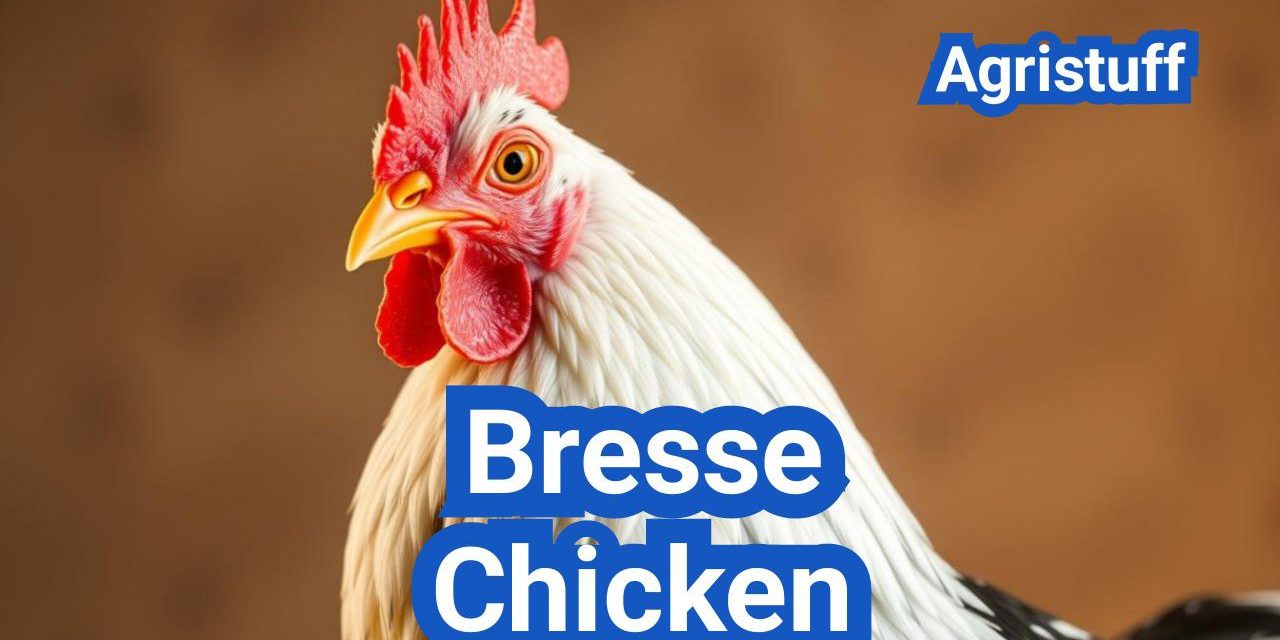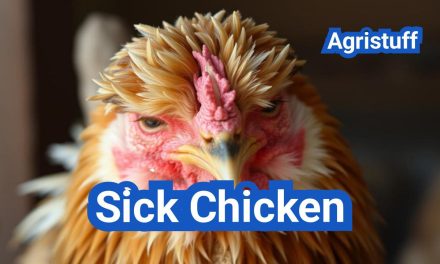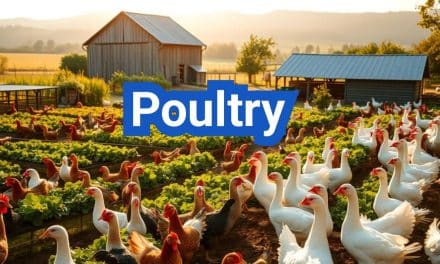The gourmet chicken breed known as Bresse Chicken is renowned for its exceptional flavor and quality, making it a premium product in the world of poultry.
This heritage poultry from France has gained international acclaim for its unique characteristics, which are a result of its specific breeding and rearing practices, including being pasture-raised.
The distinct taste and tender meat of this breed have made it a staple in fine dining, particularly in French cuisine. Its premium poultry meat is sought after by chefs and food connoisseurs worldwide.
Key Takeaways
- A gourmet chicken breed known for its exceptional flavor and quality.
- Renowned for its unique characteristics and premium product status.
- Specifically bred and reared, including pasture-raising practices.
- A staple in fine dining, especially in French cuisine.
- Sought after by chefs and food connoisseurs globally.
The Heritage and Origin of Bresse Chickens
In the heart of eastern France lies the birthplace of the Bresse chicken, a breed that has captivated gourmands worldwide. The Bresse region, known for its fertile soil and favorable climate, has been the cradle of this exceptional poultry breed for centuries.
The Prestigious Poulet de Bresse from France
Poulet de Bresse is not just a chicken product; it’s a culinary icon with a protected status, produced within a legally defined area in eastern France. This prestigious label is a guarantee of quality, reflecting the unique characteristics of the Bresse Gauloise breed.
The AOC Certification and Protected Status
The AOC (Appellation d’Origine Contrôlée) certification is a French label that ensures the quality and authenticity of products, including Poulet de Bresse. This certification is a testament to the breed’s unique production methods and geographical origin, safeguarding its reputation as a gourmet delicacy.
History of the Bresse Gauloise Breed
The Bresse Gauloise breed has a long history dating back to the 16th century. Known for its vigorous growth rate and exceptional meat quality, this breed has been perfected over centuries through selective breeding practices. The Bresse Gauloise is the foundation of Poulet de Bresse, contributing to its renowned flavor and texture.
The combination of traditional farming methods, the unique terroir of the Bresse region, and the genetic excellence of the Bresse Gauloise breed has resulted in a truly exceptional poultry product. Understanding the heritage and origin of Bresse chickens is crucial to appreciating the value and quality of Poulet de Bresse.
Understanding the Bresse Chicken Breed
Understanding the Bresse chicken breed requires a look into its physical attributes, behavior, and growth stages. The Bresse chicken is a unique and premium breed known for its exceptional meat quality and distinctive characteristics.
Physical Appearance and Distinctive Features
The Bresse chicken is easily recognizable due to its white feathers, blue legs, and red comb. These physical attributes are not just aesthetically pleasing but also contribute to the breed’s identity. The white plumage is tightly feathered, giving the birds a clean and elegant appearance.
Temperament and Behavior Traits
Bresse chickens are known for their moderate temperament. They are generally calm and can be quite protective of their hens. This protective nature is a desirable trait for many breeders and backyard keepers. The breed’s temperament makes it suitable for various environments, from small farms to larger commercial operations.
Lifespan and Development Stages
The lifespan of a Bresse chicken can vary depending on its purpose (whether it’s for meat or egg production) and living conditions. Generally, Bresse chickens can live for several years. Here’s a breakdown of their development stages:
| Stage | Age | Characteristics |
|---|---|---|
| Chick | 0-8 weeks | Vulnerable, requires brooding |
| Pullet | 8-16 weeks | Developing feathers, starts foraging |
| Adult | 16+ weeks | Fully grown, starts laying eggs or is used for meat |
The American Bresse chicken, a variation of the French Bresse, has adapted to the U.S. climate while maintaining the breed’s signature qualities.
Bresse Chicken Varieties and Color Genetics

Bresse chickens come in several distinct varieties, each with unique characteristics. The breed is recognized in four main color varieties: white, black, blue, and gray (sometimes referred to as splash or blue splash).
White Bresse (Bresse Gauloise Blanche)
The White Bresse, also known as Bresse Gauloise Blanche, is the most well-known variety. It is characterized by its white feathers and blue legs. This variety is particularly prized for its meat quality and is a staple in French cuisine.
Black Bresse Chickens
Black Bresse chickens are another popular variety, known for their sleek black feathers. They share the same blue legs as the white variety and are equally valued for their meat production.
Blue and Splash Bresse Varieties
The Blue and Splash Bresse varieties add to the genetic diversity of the breed. The blue variety has a distinctive bluish-gray plumage, while the splash variety displays a mottled appearance. Both are recognized for their unique beauty and contribute to the overall genetic health of the Bresse breed.
| Variety | Feather Color | Leg Color |
|---|---|---|
| White Bresse | White | Blue |
| Black Bresse | Black | Blue |
| Blue Bresse | Bluish-gray | Blue |
| Splash Bresse | Mottled | Blue |
Why Bresse Chicken Meat Is World-Renowned
Bresse Chicken meat has gained international acclaim for its exceptional quality and distinct flavor profile. This prestige is not merely a result of its rich history or the exclusivity of its production methods, but is deeply rooted in the unique characteristics of the meat itself.
Unique Meat Quality and Flavor Profile
The meat of Bresse Chickens is known for its tender texture and rich, nuanced flavor. This is attributed to the breed’s genetic makeup, the traditional feeding practices, and the strict production standards that adhere to the Appellation d’Origine Contrôlée (AOC) certification. The result is a product that is both succulent and full of depth, making it a favorite among chefs and gourmands alike.
The unique flavor profile is often described as a perfect balance between the richness associated with dark meat and the delicacy of white meat. This balance, combined with the meat’s tender texture, contributes to its gourmet status.
Comparison with Other Gourmet Chicken Breeds
When compared to other gourmet chicken breeds, Bresse Chicken stands out due to its superior taste and texture. Unlike some breeds that may be bred for specific traits such as size or egg-laying capability, Bresse Chickens are raised with a focus on meat quality. This focus results in a product that is not only delicious but also aligns with the expectations of high-end culinary professionals.
| Breed | Meat Quality | Flavor Profile |
|---|---|---|
| Bresse Chicken | Tender, Fine Texture | Rich, Balanced |
| Kangra Valley Chicken | Coarser Texture | Less Complex Flavor |
| Yamamoto Black Chicken | Tender | Different Umami Notes |
The Science Behind Bresse Meat Excellence
The excellence of Bresse Chicken meat can be attributed to a combination of genetic factors, feeding practices, and the production environment. The breed’s genetics play a crucial role in its growth rate and muscle composition, which contribute to its tender and flavorful meat. Additionally, the traditional feeding practices, which include a diet rich in grains and often involve a finishing period with milk or other specific feeds, enhance the meat’s quality and flavor.
The strict adherence to traditional methods and the AOC certification process ensure that every step of the production, from breeding to finishing, meets high standards that contribute to the final product’s excellence.
American Bresse vs. French Bresse: Key Differences

While both American and French Bresse chickens share a common heritage, they have developed distinct differences over time. The divergence is primarily due to genetic lineage, adaptation to local environments, and regulatory frameworks governing the breed.
Genetic Lineage and Adaptation
The French Bresse, also known as Poulet de Bresse, is a product of centuries-old breeding practices in France, strictly adhering to traditional methods and geographical location. In contrast, American Bresse chickens, while descended from the French Bresse, have been bred to adapt to the U.S. climate and farming conditions. This adaptation has resulted in differences in their genetic lineage, with American Bresse often being a cross between French Bresse and other breeds to enhance hardiness and productivity.
Regulatory Differences and Naming Conventions
One of the significant differences lies in the regulatory framework and naming conventions. The French Bresse is protected by an Appellation d’Origine Contrôlée (AOC) certification, ensuring that only chickens raised in specific regions of France can be labeled as “Poulet de Bresse.” In the United States, there are no such strict regulations, leading to variations in what is marketed as “American Bresse.”
Performance Comparison in U.S. Conditions
When comparing the performance of American and French Bresse in U.S. conditions, several factors come into play. American Bresse chickens are generally more robust and adapted to the local climate, potentially offering better growth rates and disease resistance compared to their French counterparts. However, the French Bresse is renowned for its superior meat quality, a characteristic that American Bresse breeders strive to maintain while improving hardiness.
In conclusion, while both American and French Bresse chickens have their unique advantages, understanding their differences is crucial for breeders and consumers. By recognizing these distinctions, one can make informed decisions about which breed best suits their needs and preferences.
How to Source and Select Quality Bresse Chickens
Sourcing high-quality Bresse chickens requires careful consideration of several factors, including the breeder’s reputation and the quality of the birds. Whether you’re a seasoned poultry farmer or just starting out, finding the right Bresse chickens is crucial for the success of your operation.
Finding Reputable Bresse Chicken Breeders in the USA
To find reputable Bresse chicken breeders in the USA, start by researching online, attending poultry shows, and networking with other breeders. Look for breeders who are transparent about their breeding practices, provide clear health guarantees, and have a strong reputation within the poultry community.
It’s also essential to check if the breeder is registered with relevant poultry associations and adheres to breed standards. A reputable breeder will be proud to share information about their flock’s genetics, health protocols, and feeding practices.
What to Look for When Purchasing Bresse Chicks
When purchasing Bresse chicken chicks, look for signs of good health, such as bright eyes, active behavior, and clean, dry vents. Check that the chicks are well-feathered and appropriately sized for their age. It’s also crucial to ask the breeder about their vaccination protocols and health guarantees.
Ensure that you’re buying chicks from a breeder who prioritizes genetics and has a clear breeding program in place. This will help ensure that your chicks will grow into healthy, productive birds.
Evaluating Hatching Eggs for Home Incubation
If you prefer to incubate Bresse chicken hatching eggs yourself, it’s vital to evaluate the eggs carefully. Look for eggs that are clean, well-shaped, and of a consistent size. The breeder should be able to provide information on fertility rates and incubation success.
When selecting hatching eggs, consider the breeder’s reputation and the genetics of the parent stock. High-quality hatching eggs are more likely to result in healthy chicks and, ultimately, productive adult birds.
By carefully evaluating potential breeders, assessing the quality of chicks or hatching eggs, and considering factors like genetics and health protocols, you can source high-quality Bresse chickens that will thrive in your operation.
Setting Up Your Bresse Chicken Operation

Establishing a successful Bresse chicken operation requires careful planning and attention to detail. The initial setup is crucial for the health, welfare, and productivity of the birds.
Brooding Setup for Bresse Chicks
The brooding period is critical for Bresse chicks, requiring a warm, safe, and healthy environment. A well-designed brooder should maintain a temperature of around 90°F to 100°F for the first few weeks, gradually decreasing as the chicks grow.
A good brooding setup includes adequate ventilation, sufficient lighting, and protection from predators. It’s also essential to provide starter feed that meets the nutritional needs of the growing chicks.
Designing the Ideal Coop and Run System
The coop and run system is a vital component of a Bresse chicken operation, providing shelter and exercise space for the birds. The coop should be well-ventilated, dry, and protected from predators, with enough space for the chickens to roost comfortably.
The run should be securely fenced to prevent escape and predation, with adequate space for the chickens to move around. A general rule of thumb is to provide at least 2-4 square feet of coop space and 8-10 square feet of run space per bird.
| Coop and Run Specifications | Recommended Size | Key Features |
|---|---|---|
| Coop Space | 2-4 sq ft per bird | Ventilation, dryness, predator protection |
| Run Space | 8-10 sq ft per bird | Secure fencing, adequate exercise space |
Creating Pasture Rotation for Authentic Bresse Quality
Pasture rotation is essential for maintaining the authenticity and quality of Bresse chickens. By rotating pastures, farmers can ensure that the birds have access to fresh forage, reducing the risk of disease and promoting healthy growth.
A well-designed pasture rotation plan involves dividing the land into smaller sections, allowing each area to rest and recover between rotations. This approach not only benefits the chickens but also enhances soil health and biodiversity.
By carefully planning and executing the setup of a Bresse chicken operation, farmers can create a thriving and sustainable business that produces high-quality birds.
Step-by-Step Guide to Feeding Bresse Chickens

Understanding the nutritional needs of Bresse chickens is fundamental to achieving high-quality meat production. Bresse chickens have specific dietary requirements that vary by age, and adhering to these needs is crucial for their growth and development.
Daily Nutrition Requirements by Age
Bresse chickens require a diet rich in proteins and nutrients, especially during their early stages of growth. Starter feed with a high protein content (around 20%) is recommended for chicks from 0 to 8 weeks. As they grow, the protein content can be gradually reduced.
From 8 to 12 weeks, a grower feed with a protein content of about 16-18% is suitable. It’s also important to ensure that the feed is rich in vitamins and minerals to support overall health.
Implementing Traditional French Feeding Methods
Traditional French feeding methods for Bresse chickens emphasize the use of natural feedstuffs and avoidance of antibiotics and hormones. This approach not only enhances the quality of the meat but also aligns with the AOC certification requirements for authentic Bresse chickens.
Feeding Bresse chickens involves providing them with a diverse diet that includes grains, insects, and plants. This diversity is key to developing the complex flavor profile that Bresse chicken is renowned for.
The Finishing Period: Enhancing Meat Quality
The finishing period, typically the last few weeks before processing, is critical for enhancing the meat quality of Bresse chickens. During this time, the diet is often supplemented with maize and other grains to improve the fat content and tenderness of the meat.
A well-managed finishing period can significantly impact the final product’s quality, making it more tender and flavorful. This stage requires careful planning and attention to detail to achieve the desired outcomes.
Managing the Health of Your Bresse Flock

The health of your Bresse chicken flock is paramount, and achieving this involves a combination of preventative measures and vigilant health monitoring. A well-managed health program is crucial for the overall well-being and productivity of your chickens.
Preventative Health Protocols
Implementing preventative health protocols is the first line of defense against diseases. This includes vaccinations, maintaining a clean environment, and ensuring that your chickens receive a balanced diet rich in necessary nutrients. Regularly cleaning and disinfecting the coop and run can significantly reduce the risk of disease.
Vaccination programs should be tailored to the specific needs of your flock, considering factors like age and health status. Moreover, biosecurity measures such as controlling access to your flock and monitoring for signs of illness are critical.
Recognizing and Treating Common Health Issues
Early detection of health issues is vital. Common health problems in Bresse chickens include respiratory infections, parasites, and nutritional deficiencies. Regular inspections of your flock can help identify these issues before they become severe.
For instance, recognizing the signs of respiratory infections, such as labored breathing or lethargy, allows for prompt treatment. Parasite control measures, including regular checks for mites and lice, are also essential for maintaining flock health.
Natural Health Maintenance Practices
In addition to preventative protocols and disease treatment, incorporating natural health maintenance practices can enhance the overall health of your Bresse chickens. This includes providing a diverse diet that may include foraging opportunities and using natural remedies when appropriate.
For example, adding certain herbs to their diet or using diatomaceous earth for parasite control can be beneficial. Ensuring that your chickens have access to fresh air, sunlight, and adequate space to roam also contributes to their overall health and well-being.
By combining these approaches, you can maintain a healthy and thriving Bresse chicken flock. Effective health management not only improves the welfare of your chickens but also enhances the quality of the meat and eggs they produce.
Maximizing Bresse Chicken Egg Production

The Bresse chicken breed is not only prized for its meat but also for its high-quality egg production. To maximize egg laying, it’s essential to understand the characteristics of Bresse chicken eggs and how to optimize laying conditions.
Egg Color, Size, and Quality Characteristics
Bresse chickens lay eggs that are typically white or light brown in color, with a size that can range from medium to large. The quality of these eggs is renowned for their strong shells and rich yolks. The unique genetic makeup of Bresse chickens contributes to the exceptional taste and texture of their eggs.
| Egg Characteristic | Description |
|---|---|
| Egg Color | White or Light Brown |
| Egg Size | Medium to Large |
| Shell Quality | Strong |
| Yolk Quality | Rich and Flavorful |
Optimizing Laying Conditions and Productivity
To maximize egg production, Bresse chickens require optimal living conditions. This includes a clean, spacious coop with adequate nesting boxes. Adequate nutrition and access to fresh water are also crucial for maintaining high egg production. Ensuring that your Bresse chickens have a stress-free environment can significantly impact their productivity.
Collecting, Cleaning, and Storing Bresse Eggs
Regular collection of eggs is vital to maintain their quality and encourage continuous laying. Eggs should be cleaned gently to remove any dirt, and stored in a cool, dry place. Proper storage can help preserve the quality of Bresse eggs for a longer period.
By understanding the characteristics of Bresse chicken eggs and optimizing their laying conditions, you can maximize egg production and enjoy the many benefits of raising these exceptional birds.
Raising Bresse Chickens as a Dual-Purpose Breed

The versatility of Bresse chickens makes them an attractive choice for farmers looking to produce both high-quality eggs and meat. This dual-purpose breed offers a unique opportunity for farmers to diversify their products and enhance their farm’s profitability.
Balancing Egg and Meat Production Goals
To successfully raise Bresse chickens for both eggs and meat, farmers must strike a balance between these two production goals. This involves careful planning and management of the flock to ensure that both egg production and meat quality are optimized.
Egg production in Bresse chickens is influenced by factors such as nutrition, lighting, and health conditions. Ensuring that hens receive a balanced diet and are kept in comfortable, stress-free conditions can enhance egg laying.
Meat production, on the other hand, requires a focus on growth rates and feed efficiency. Bresse chickens are known for their slow growth rate, which contributes to the development of their unique meat quality. Farmers should implement feeding strategies that support this slow growth while ensuring the birds reach market weight efficiently.
Selective Breeding for Dual-Purpose Excellence
Selective breeding is crucial for developing a flock that excels in both egg and meat production. By choosing birds that exhibit desirable traits for both purposes, farmers can gradually improve their flock’s performance over generations.
“The art of breeding lies in selecting for the traits that matter most to your farm’s goals, whether that’s egg laying capacity, meat quality, or a balance of both.” – Expert Poultry Breeder
Key traits to focus on include:
- Egg laying capacity
- Growth rate and feed efficiency for meat production
- Hardiness and disease resistance
- Temperament and behavior
Flock Management Timeline for Year-Round Production
Effective flock management is essential for maintaining year-round production of both eggs and meat. This involves planning the breeding, hatching, and growth stages of the chickens to ensure a continuous supply.
| Month | Activity | Production Focus |
|---|---|---|
| January | Breeding Season Begins | Egg Production |
| March | Hatching | Meat Production |
| June | Flock Health Checks | Both |
| September | Adjust Nutrition for Winter | Egg Production |
By following a structured flock management timeline, farmers can ensure that their Bresse chicken operation remains productive and profitable throughout the year.
Processing Bresse Chickens for Premium Meat
Achieving the renowned quality of Bresse chicken meat necessitates a thorough understanding of the processing techniques. The journey to premium Bresse chicken meat involves several critical steps, from determining the optimal age for butchering to employing traditional French finishing techniques.
Determining the Optimal Age for Butchering
The age at which Bresse chickens are butchered significantly impacts the quality of the meat. Typically, Bresse chickens are processed between 16 to 20 weeks of age. At this stage, they have reached optimal weight and the meat has developed the characteristic tenderness and flavor.
| Age (Weeks) | Weight (lbs) | Meat Quality Characteristics |
|---|---|---|
| 16-18 | 4-5 | Tender, fine texture, developing flavor |
| 18-20 | 5-6 | Optimal tenderness, rich flavor profile |
Step-by-Step Traditional French Finishing Techniques
Traditional French finishing techniques play a crucial role in enhancing the quality of Bresse chicken meat. This involves a period of finishing where the chickens are fed a diet rich in grains, which enhances the marbling and flavor of the meat.
Finishing Diet Composition:
- High-quality grains
- Milk or dairy products
- Access to pasture for natural foraging
Humane Slaughtering and Processing Methods
Humane treatment of Bresse chickens during slaughter and processing is essential for maintaining the premium quality of the meat. This includes minimizing stress and ensuring that the chickens are handled carefully.
The processing of Bresse chickens for premium meat is a detailed process that requires careful consideration of several factors, including the age at butchering, finishing techniques, and humane treatment during slaughter. By adhering to these practices, producers can ensure that their Bresse chicken meat meets the highest standards of quality.
Authentic Bresse Chicken Recipes and Preparation

Bresse chicken’s unique characteristics make it ideal for a range of cooking techniques, from traditional French methods to modern innovations. The rich flavor profile and tender texture of Bresse chicken make it a versatile ingredient in many gourmet dishes.
Classic Poulet de Bresse à la Crème
Poulet de Bresse à la Crème is a quintessential French recipe that showcases the rich flavor of Bresse chicken. This dish involves cooking the chicken in a creamy sauce with mushrooms, onions, and a touch of white wine. The result is a tender, flavorful chicken dish that is sure to impress.
Ingredients:
- 1 Bresse chicken, cut into pieces
- 2 tablespoons butter
- 1 onion, sliced
- 2 cups mushrooms, sliced
- 1 cup heavy cream
- 1/2 cup white wine
- Salt and pepper to taste
Instructions:
- Sauté the chicken pieces in butter until golden brown.
- Add sliced onions and cook until softened.
- Add mushrooms and cook until they release their moisture.
- Add heavy cream and white wine, simmering until the sauce thickens.
- Season with salt and pepper to taste.
Modern Culinary Applications for Home Chefs
Bresse chicken can be used in a variety of modern recipes, from salads to pasta dishes. Its tender meat pairs well with a range of flavors, making it a versatile ingredient for home chefs.
| Recipe | Ingredients | Instructions |
|---|---|---|
| Bresse Chicken Salad | Bresse chicken, mixed greens, cherry tomatoes, vinaigrette | Combine cooked Bresse chicken with mixed greens, cherry tomatoes, and a light vinaigrette. |
| Bresse Chicken Pasta | Bresse chicken, pasta, garlic, olive oil, parmesan cheese | Sauté garlic and Bresse chicken in olive oil, then toss with cooked pasta and top with parmesan cheese. |
Wine and Side Dish Pairings for Bresse Chicken
When serving Bresse chicken, selecting the right wine and side dishes can elevate the dining experience. Traditional pairings include white wines such as Chardonnay or Sauvignon Blanc, along with side dishes like roasted vegetables or creamy mashed potatoes.
For a more contemporary twist, consider pairing Bresse chicken with a light red wine like Pinot Noir or a dry rosé. Side dishes such as grilled asparagus or a fresh salad can complement the rich flavor of the chicken.
Building a Sustainable Bresse Chicken Enterprise
Establishing a thriving Bresse Chicken enterprise requires meticulous planning, encompassing breeding, feeding, and processing considerations. By understanding the heritage and unique characteristics of Bresse Chickens, farmers can develop a sustainable business model that capitalizes on the premium quality of this renowned poultry breed.
A successful Bresse Chicken business involves implementing best practices in breeding, nutrition, and health management. This includes sourcing high-quality breeding stock, adopting traditional French feeding methods, and maintaining rigorous health protocols to ensure the integrity of the flock.
To create a sustainable Bresse Chicken enterprise, farmers must also consider market demand, regulatory requirements, and environmental sustainability. By balancing these factors, producers can establish a profitable and environmentally conscious Bresse Chicken business that meets the growing demand for premium poultry products.
By adopting a holistic approach to Bresse Chicken farming, entrepreneurs can build a resilient and sustainable business that showcases the unique qualities of this exceptional breed, ultimately contributing to the growth of a thriving Bresse chicken enterprise and promoting sustainable bresse chicken farming practices within the industry.
FAQ
What is Bresse Chicken?
Bresse Chicken is a renowned, dual-purpose breed originating from France, celebrated for its exceptional meat quality and egg production.
What makes Bresse Chicken so special?
Bresse Chicken is prized for its unique genetic lineage, superior meat quality, and rich flavor profile, making it a gourmet poultry breed.
What are the different varieties of Bresse Chicken?
The main varieties of Bresse Chicken include White Bresse (Bresse Gauloise Blanche), Black Bresse, Blue Bresse, and Splash Bresse, each with distinct color genetics.
How does American Bresse differ from French Bresse?
American Bresse and French Bresse differ in their genetic lineage, adaptation to local conditions, and regulatory differences, affecting their performance and characteristics.
Where can I source quality Bresse Chickens?
You can find reputable Bresse Chicken breeders in the USA by researching online, checking breed associations, and evaluating their breeding stock and practices.
What are the key elements of setting up a Bresse Chicken operation?
Setting up a Bresse Chicken operation involves designing a suitable brooding setup, coop and run system, and implementing pasture rotation for optimal health and quality.
How do I feed Bresse Chickens for optimal health and quality?
Feeding Bresse Chickens involves providing a balanced diet tailored to their age, implementing traditional French feeding methods, and ensuring a nutritious finishing period.
How can I manage the health of my Bresse flock?
Managing the health of your Bresse flock involves implementing preventative health protocols, recognizing and treating common health issues, and practicing natural health maintenance.
Can Bresse Chickens be raised for both eggs and meat?
Yes, Bresse Chickens are a dual-purpose breed, suitable for both egg and meat production, requiring careful flock management to balance these goals.
How do I process Bresse Chickens for premium meat?
Processing Bresse Chickens for premium meat involves determining the optimal age for butchering, using traditional French finishing techniques, and employing humane slaughtering and processing methods.
What are some authentic Bresse Chicken recipes?
Classic Poulet de Bresse à la Crème is a renowned recipe, and Bresse Chicken can also be used in various modern culinary applications, paired with wine and side dishes.
Is raising Bresse Chickens a sustainable enterprise?
Building a sustainable Bresse Chicken enterprise requires careful planning, selective breeding, and efficient processing practices to ensure long-term viability.
Conclusion of: Bresse Chicken
Discover the exceptional taste and heritage of Bresse Chicken, the world’s finest poultry meat breed, celebrated for its unparalleled flavor, texture, and storied provenance.
What Makes Bresse Chicken the Gold Standard
From the very beginning, Bresse Chicken commands attention for its reputation. Raised in the historic Bresse region of eastern France, this breed benefits from a finely tuned ecosystem of terrain, traditional raising practices, and rigorous standards—earning it the title of the “queen of poultry” and setting it apart from ordinary chickens. Learn more about AOC standards from the French Ministry of Agriculture.
A Heritage Steeped in Prestige
The legacy of Bresse Chicken stretches back centuries. French gastronome Jean Anthelme Brillat-Savarin famously referred to it as “the queen of poultry, the poultry of kings.” In 1957, poulet de Bresse gained appellation d’origine contrôlée (AOC) status, later supported by PDO protection, ensuring that only white Bresse Gauloise chickens raised in Bresse—butchered under precise conditions—can bear the name. Explore its history via the European Commission’s PDO database.
Raising the Highest-Quality Bird
What truly distinguishes Bresse Chicken is the meticulous care in its upbringing. Producers must provide expansive pasture access—at least 10 m² per bird—and strictly control diet, raising chicks on a simple blend of cereals and dairy before “finishing” them in an épinette with corn and milk for flavor development. This attention to detail results in birds with slate-blue legs, exceptional marbling, and deeply savory meat. For rearing guidelines, see Food and Agriculture Organization (FAO).
Flavor Beyond Compare
Culinary experts describe Bresse Chicken meat as firm yet tender, with a sweet, beef-like richness. Its fat-marbled texture delivers intense flavor, making it a prized ingredient in gourmet kitchens worldwide. Renowned chefs like Georges Blanc champion its use; read more from Michelin Guide.
A Dual-Purpose Powerhouse
Beyond being a gastronomic legend, Bresse Chicken performs well on small farms. Though most of the AOC-certified birds focus on meat, this breed also lays a commendable number of large, creamy-white eggs—providing both culinary excellence and practical utility. For insights into dual-purpose breeds, visit Penn State Extension.
Bringing Bresse to the USA: American Bresse
In the U.S., enthusiasts have imported Bresse Chicken stock—typically branded as American Bresse—to honor the AOC restrictions of France. Though not AOC-certified, American Bresse shares much of the same genetics and culinary potential. It’s well-valued by homesteaders for being fast-growing, hardy, and flavorful—often laying up to 250 cream-colored eggs per year, and delivering high-quality meat. Compare breeding practices via USDA’s National Poultry Improvement Plan.
A Beloved Choice for Home and Table
Farmers and home flock keepers adore Bresse Chicken for its balance of egg production, meat excellence, and adaptability. It’s especially suitable for small-scale, sustainable farming and homesteading setups, where flavor, self-sufficiency, and dual-purpose value all matter. Explore sustainable poultry practices at Sustainable Agriculture Research & Education (SARE).
Investing in Premium Poultry
Due to its exacting standards and limited production—around 1.2 million birds annually in France—Bresse Chicken commands premium prices across markets. These costs reflect not only its quality but also the heritage and stringent protections that make it one of the most exclusive poultry breeds in the world. For market insights, refer to OECD Agricultural Outlook.
Final Thought
Bresse Chicken stands out as a hallmark of superior poultry. Its centuries-old traditions, exacting raising methods, and unmatched culinary character make it a standout in both commercial gastronomy and dedicated homesteads. Whether enjoying the authentic AOC-certified French version or the promising American Bresse counterpart, this breed represents the pinnacle of flavorful, ethical, and evocative poultry.










